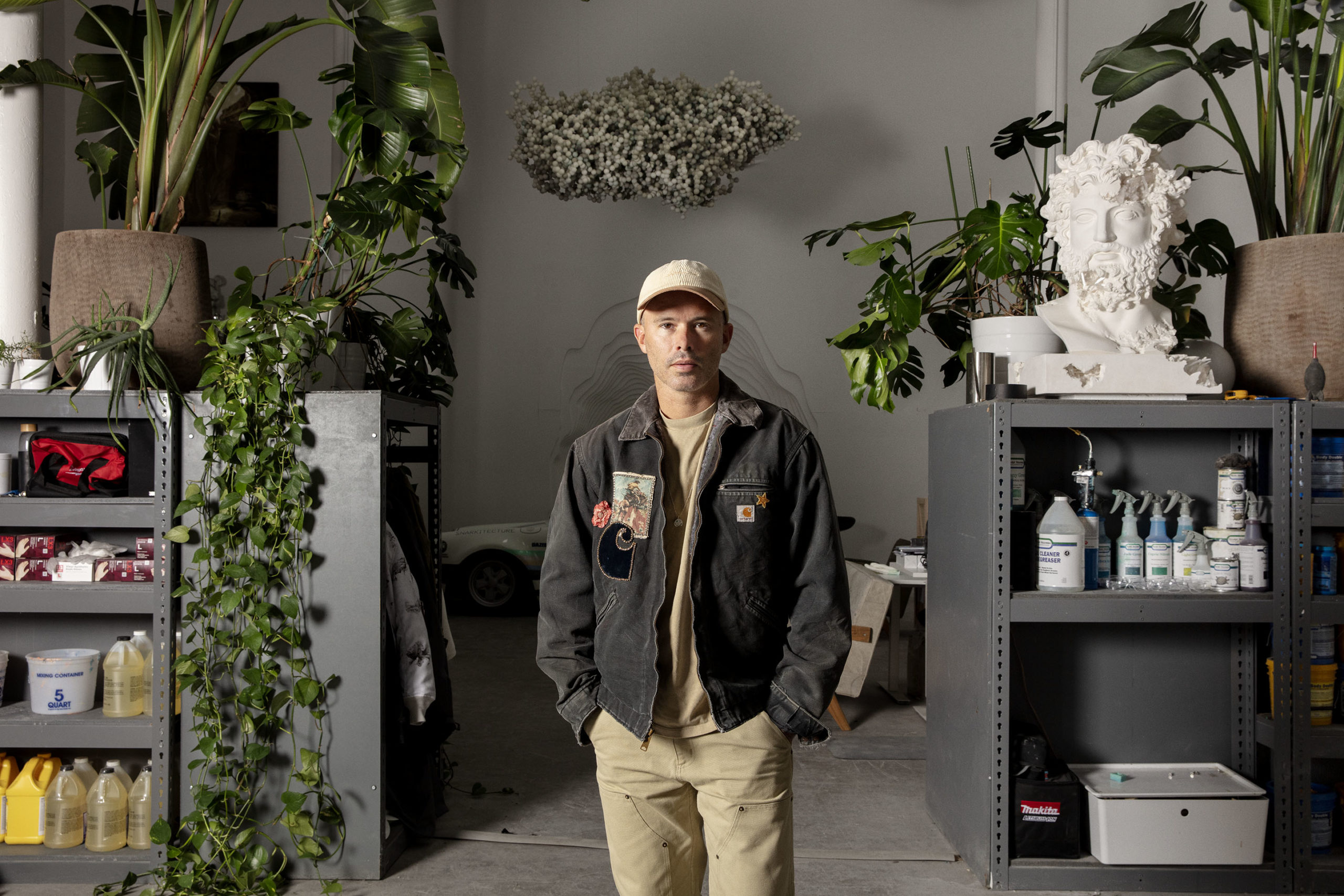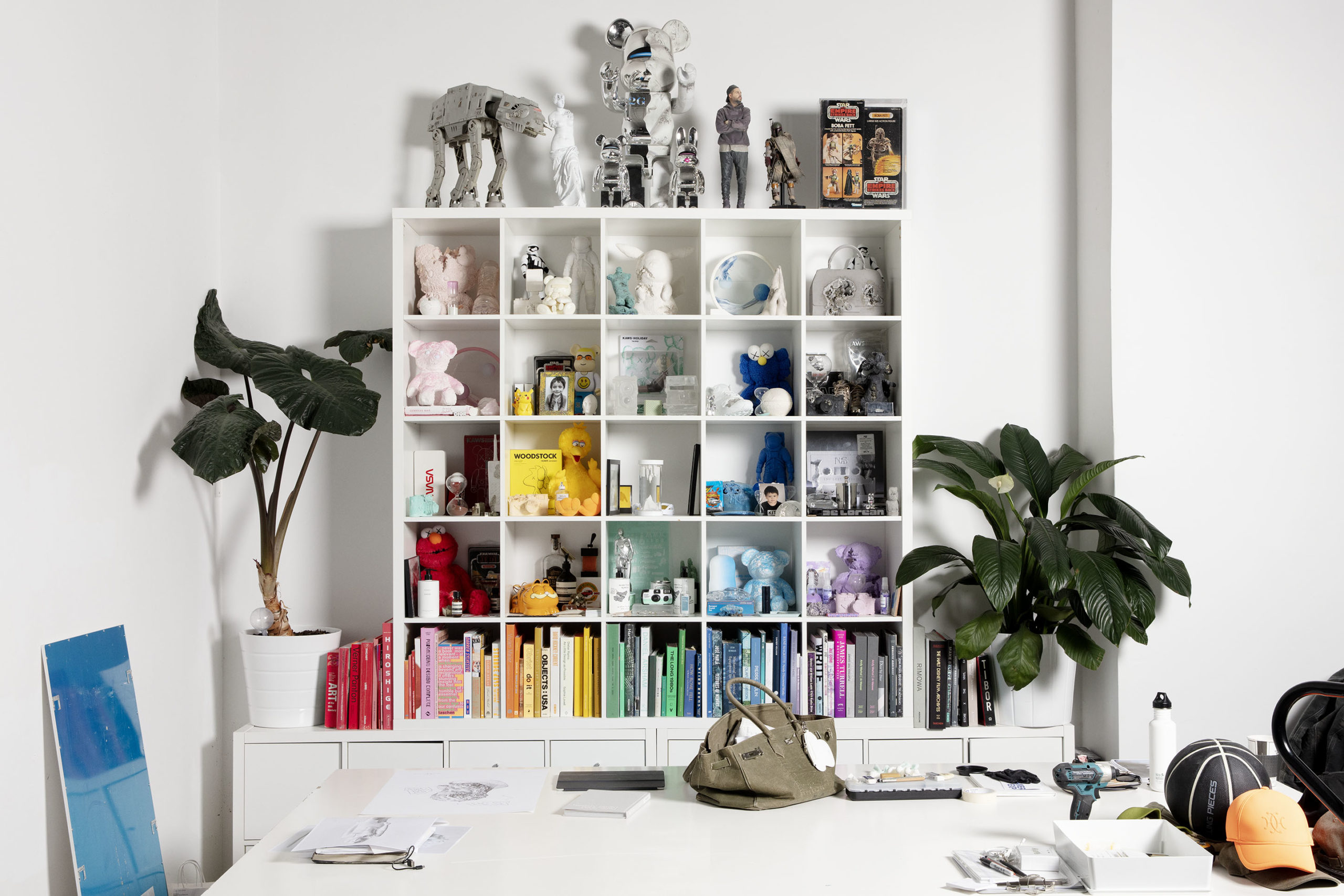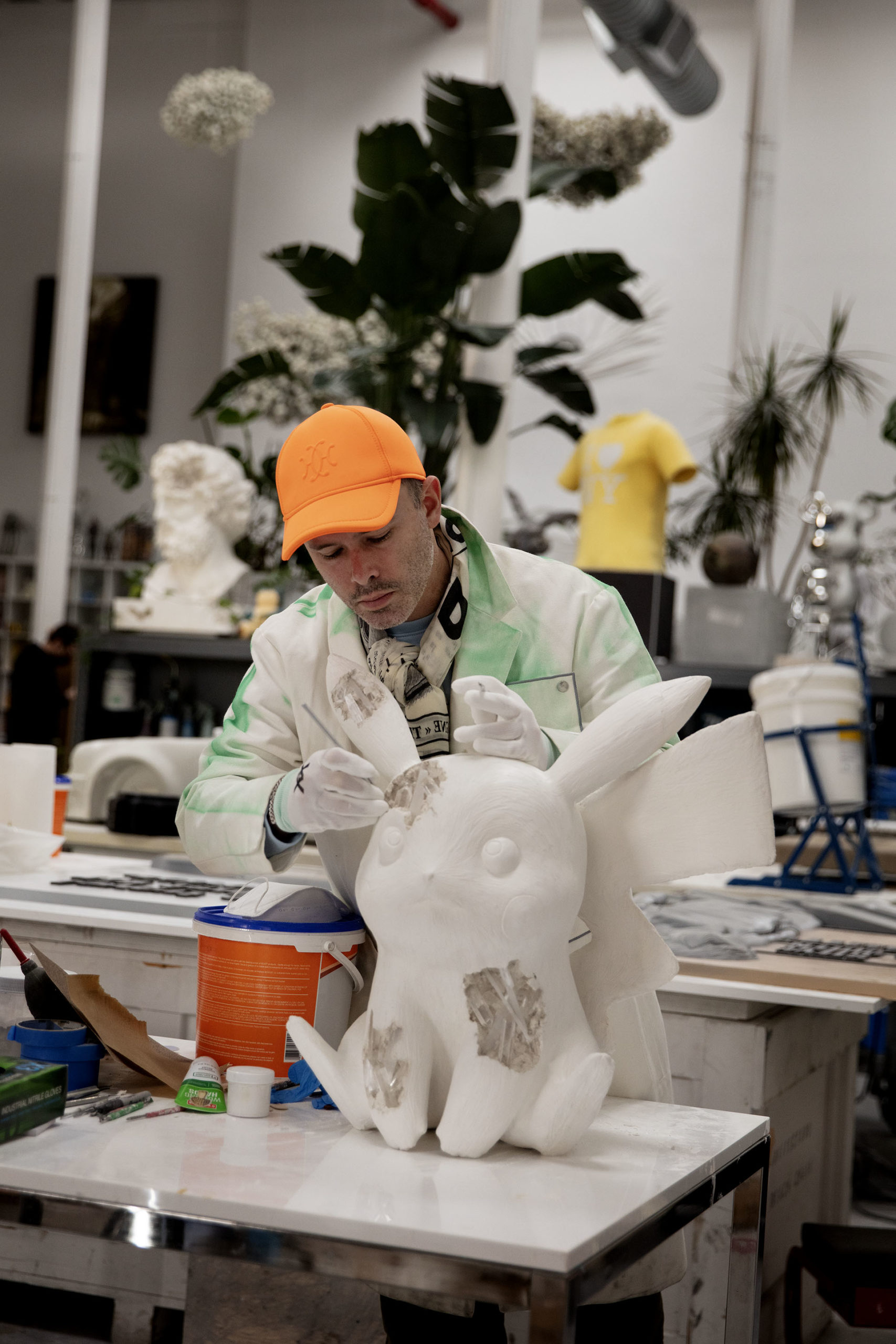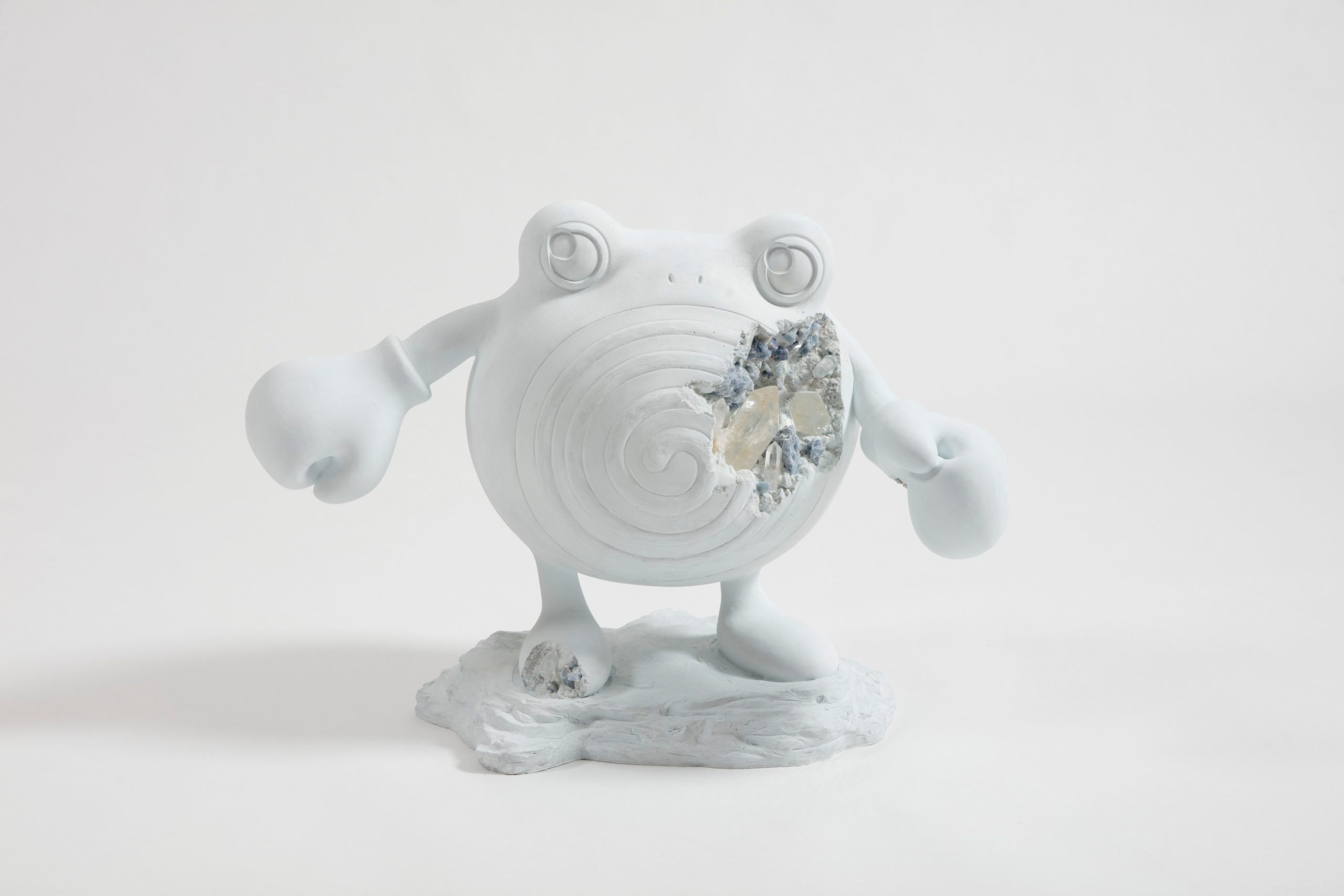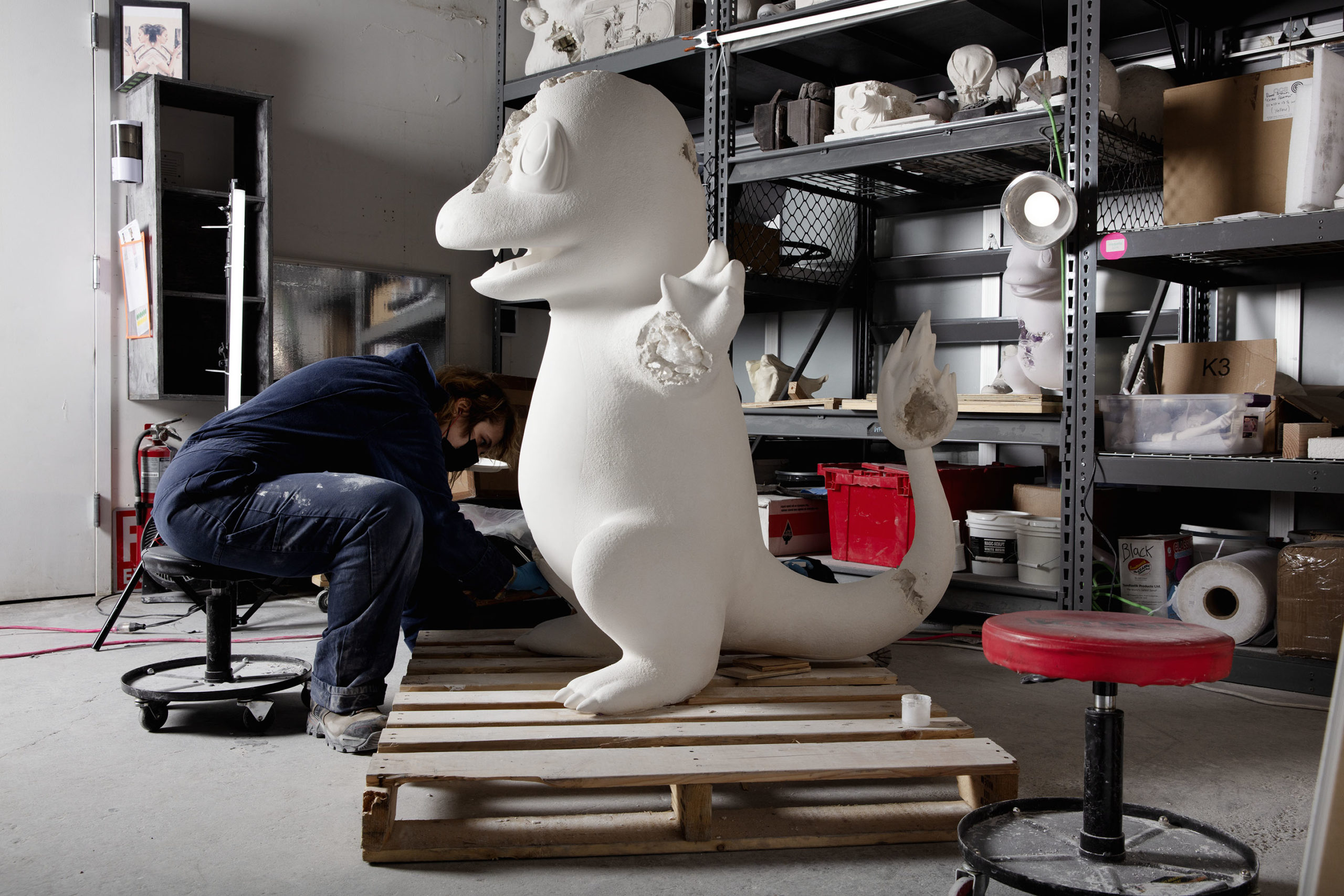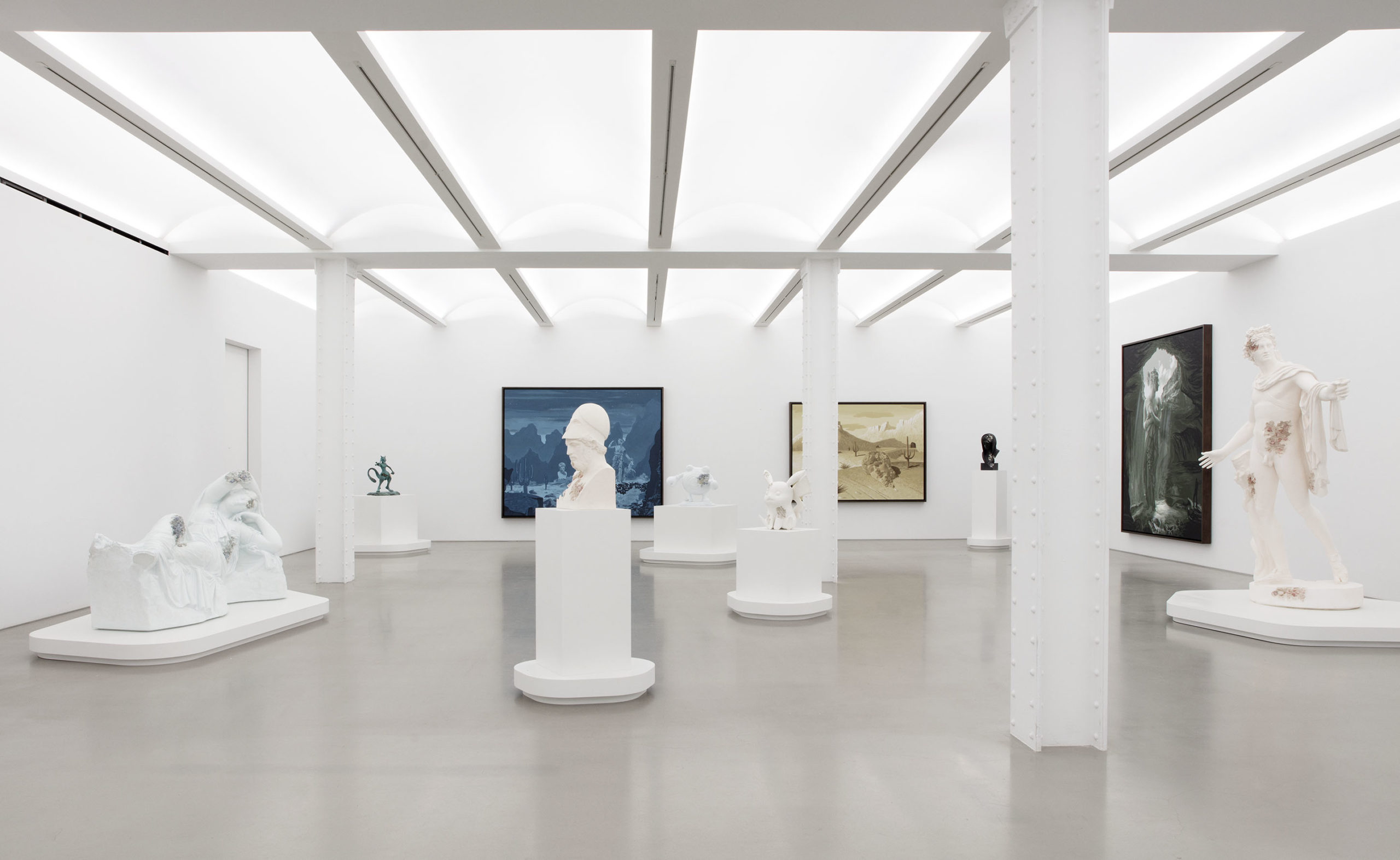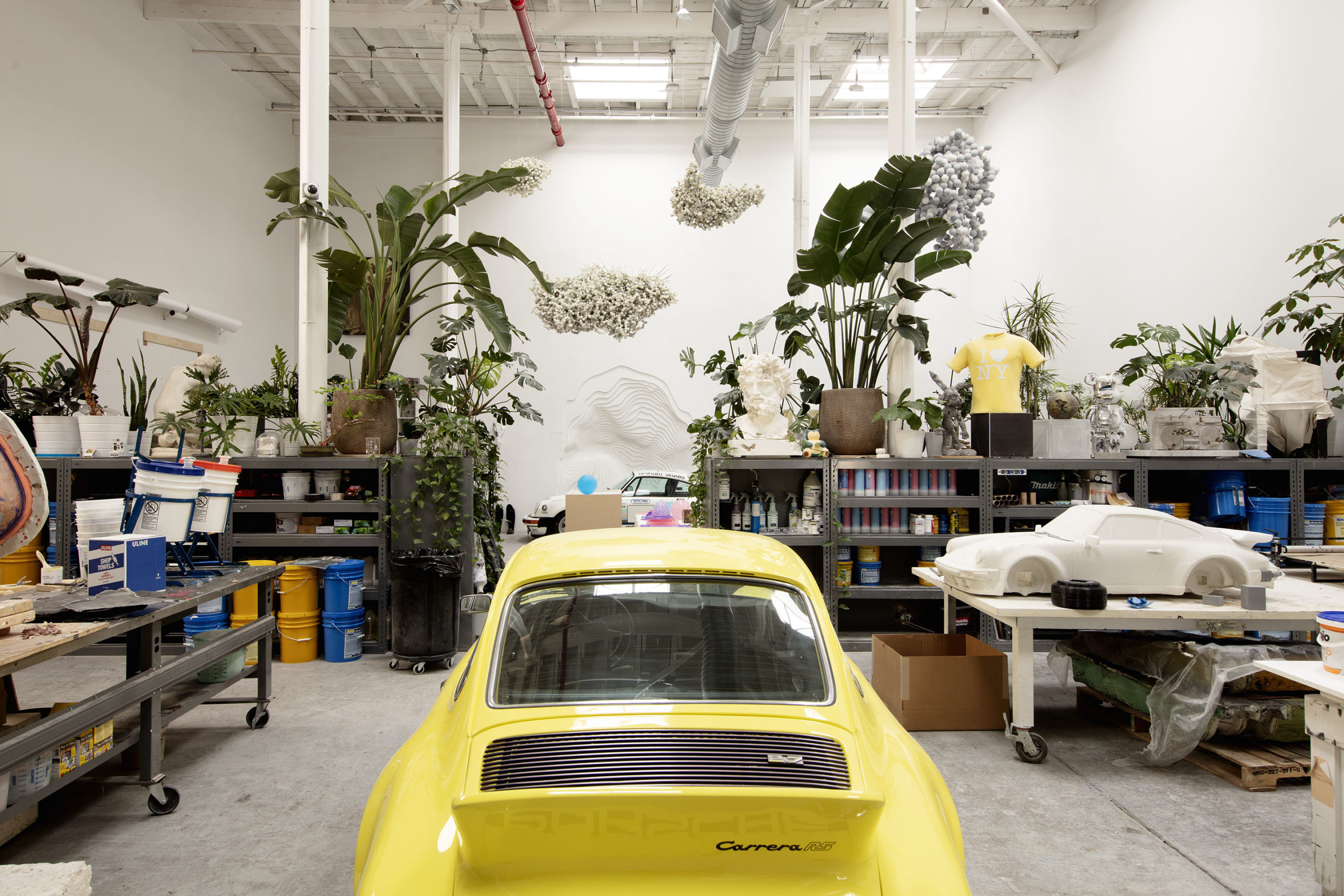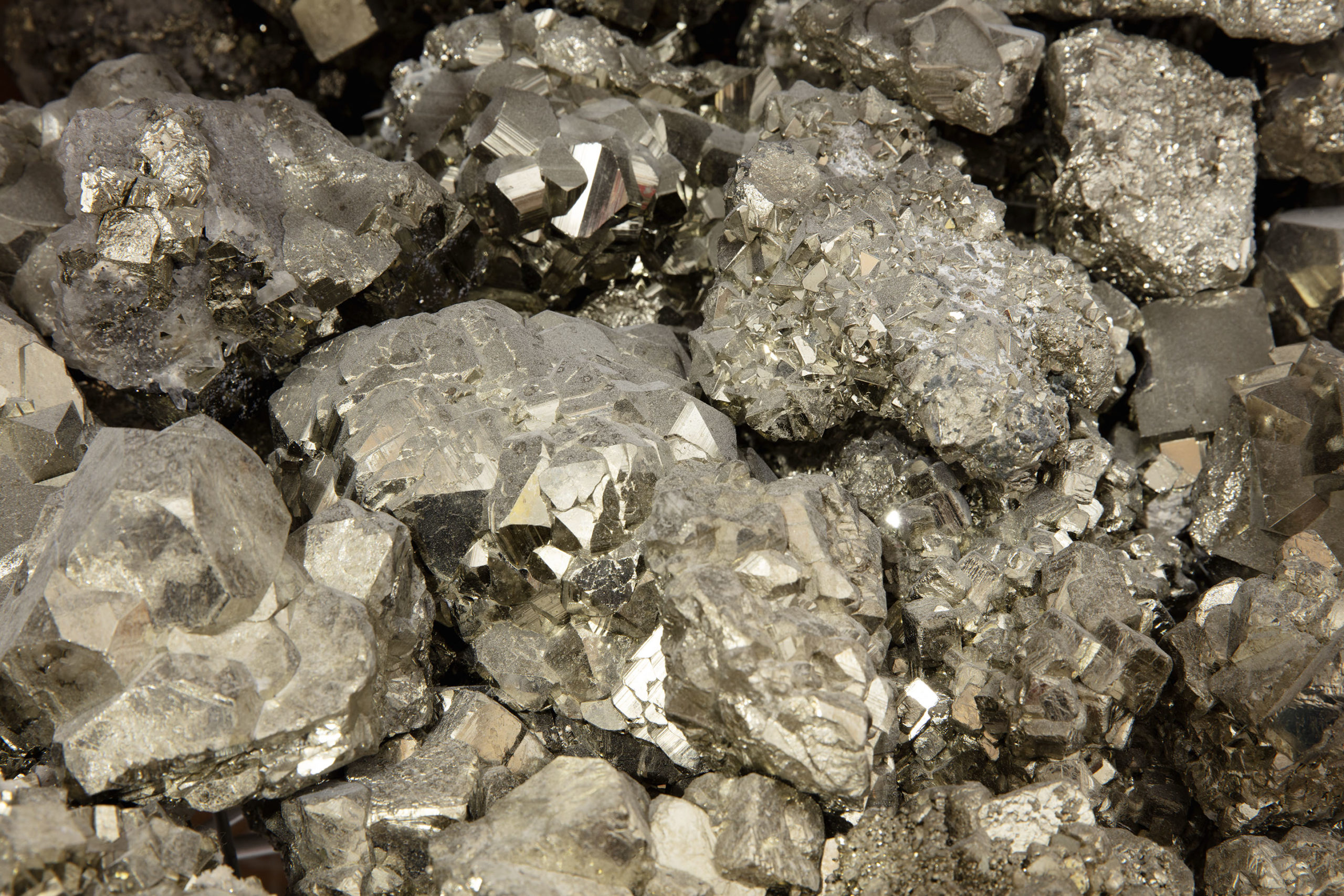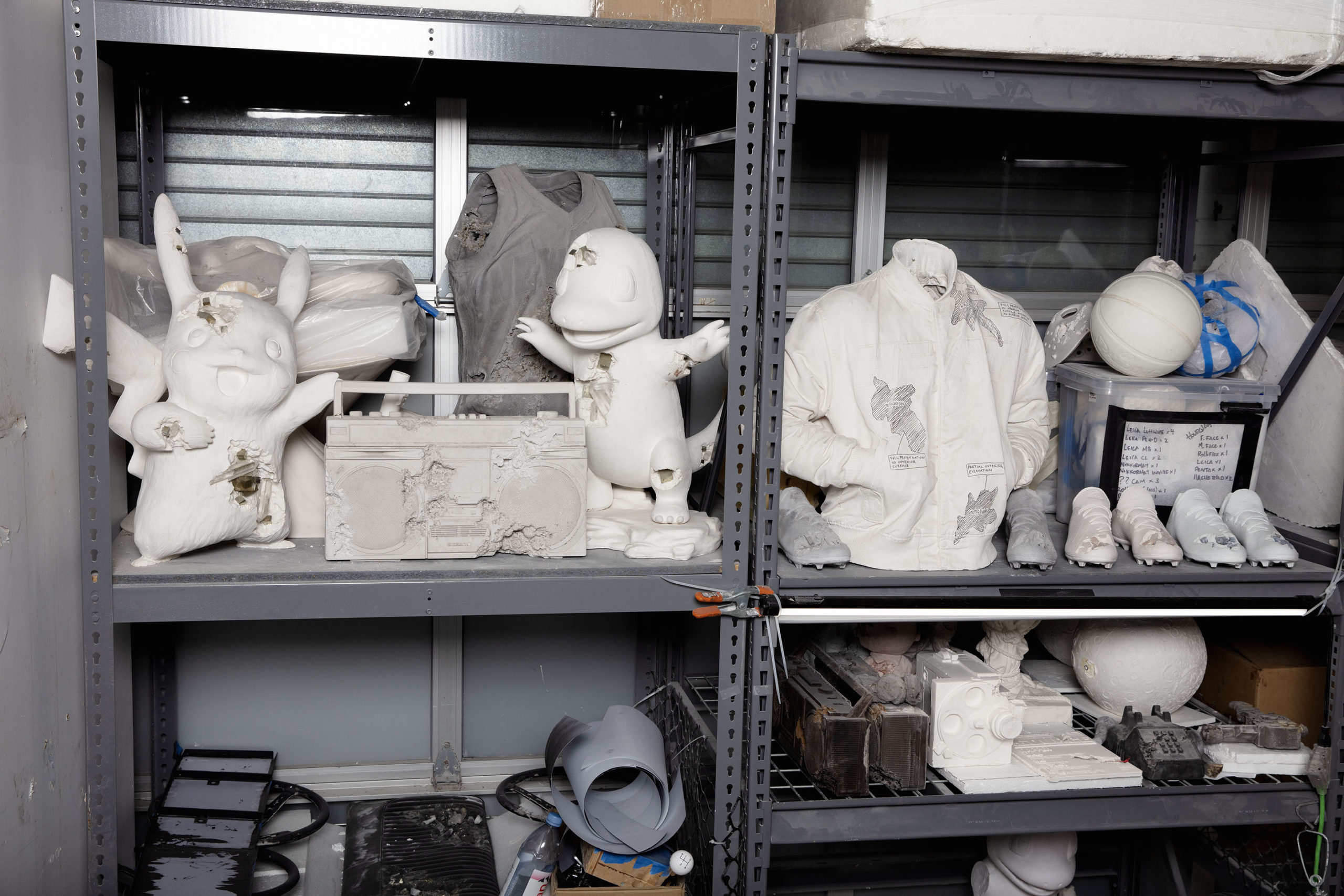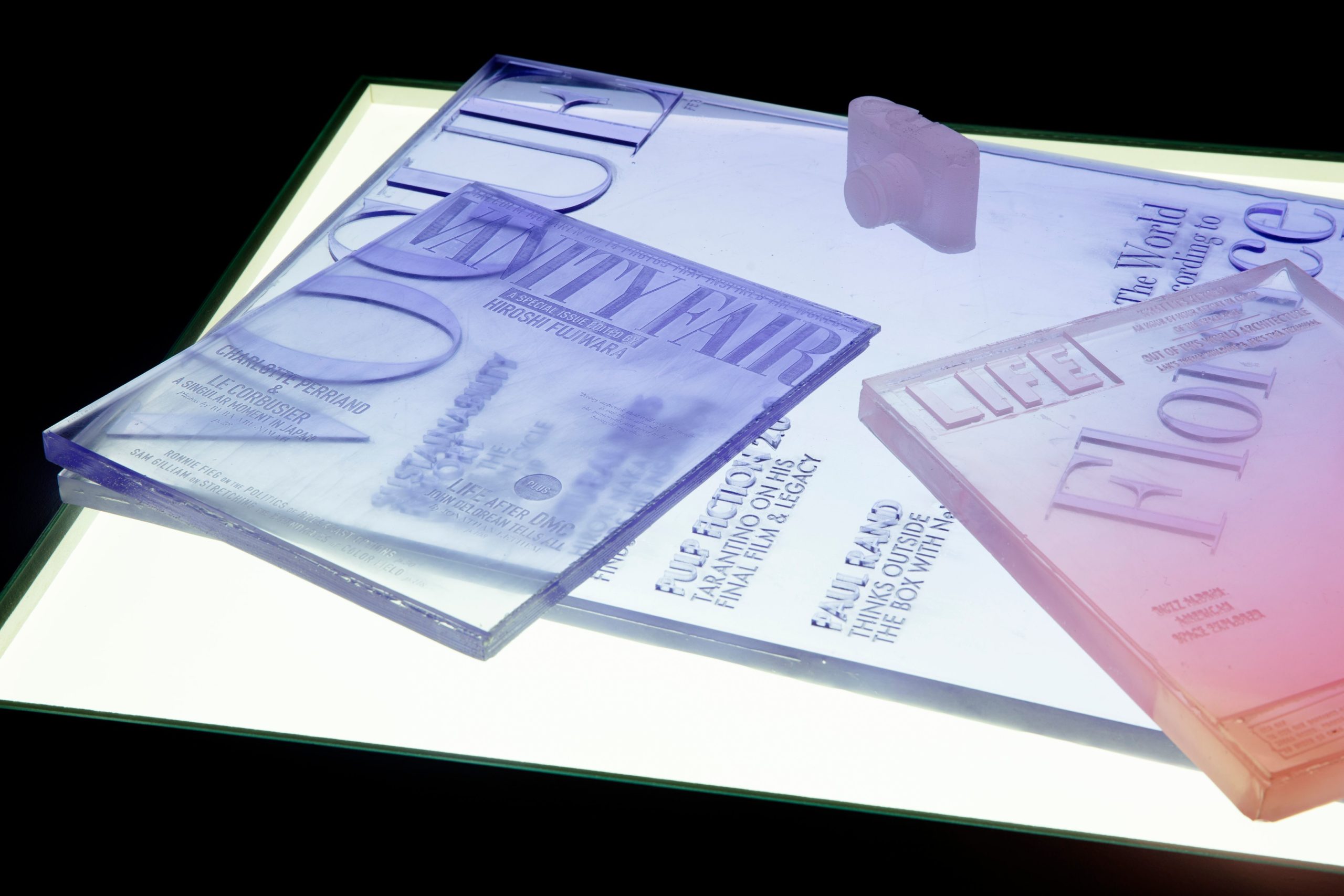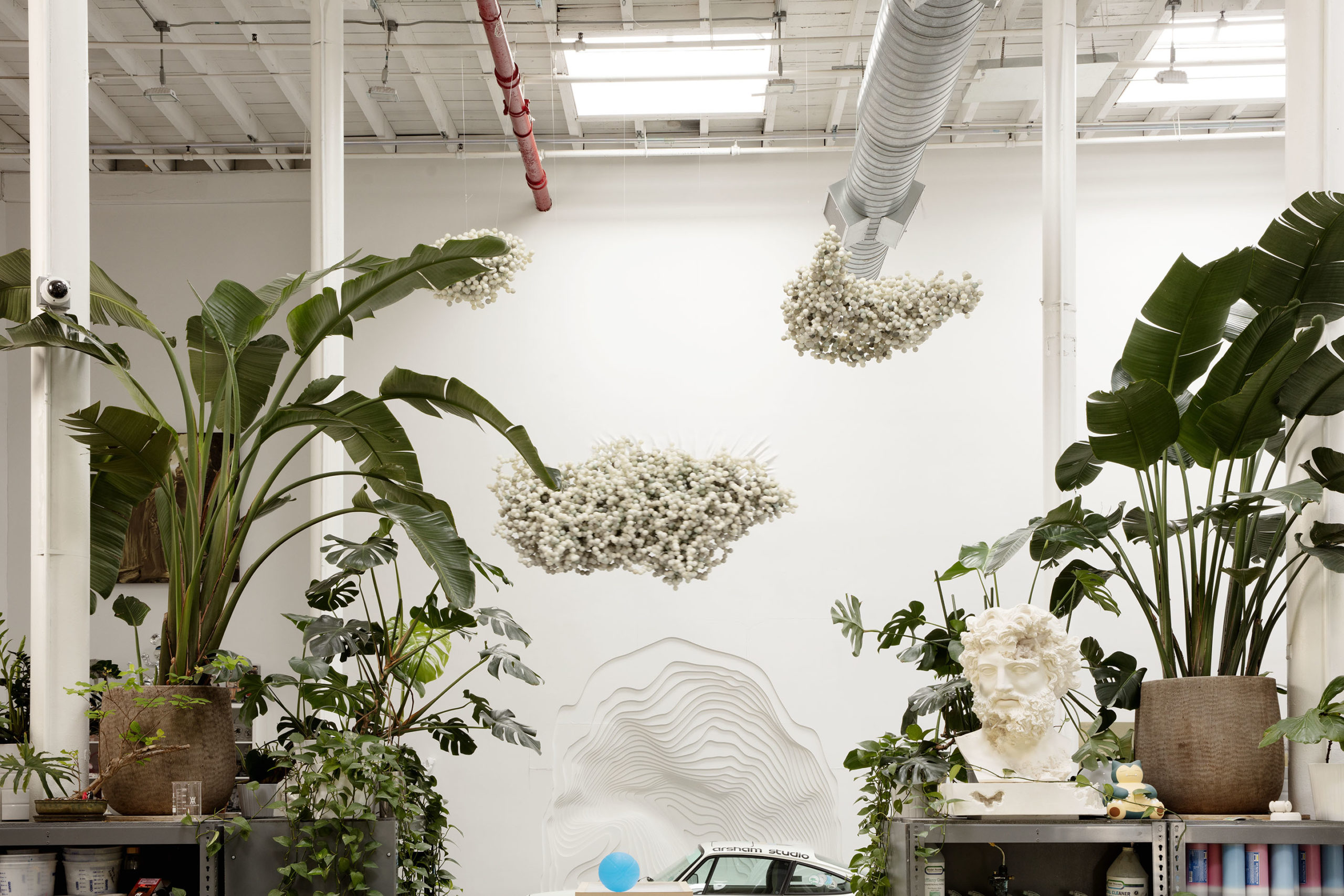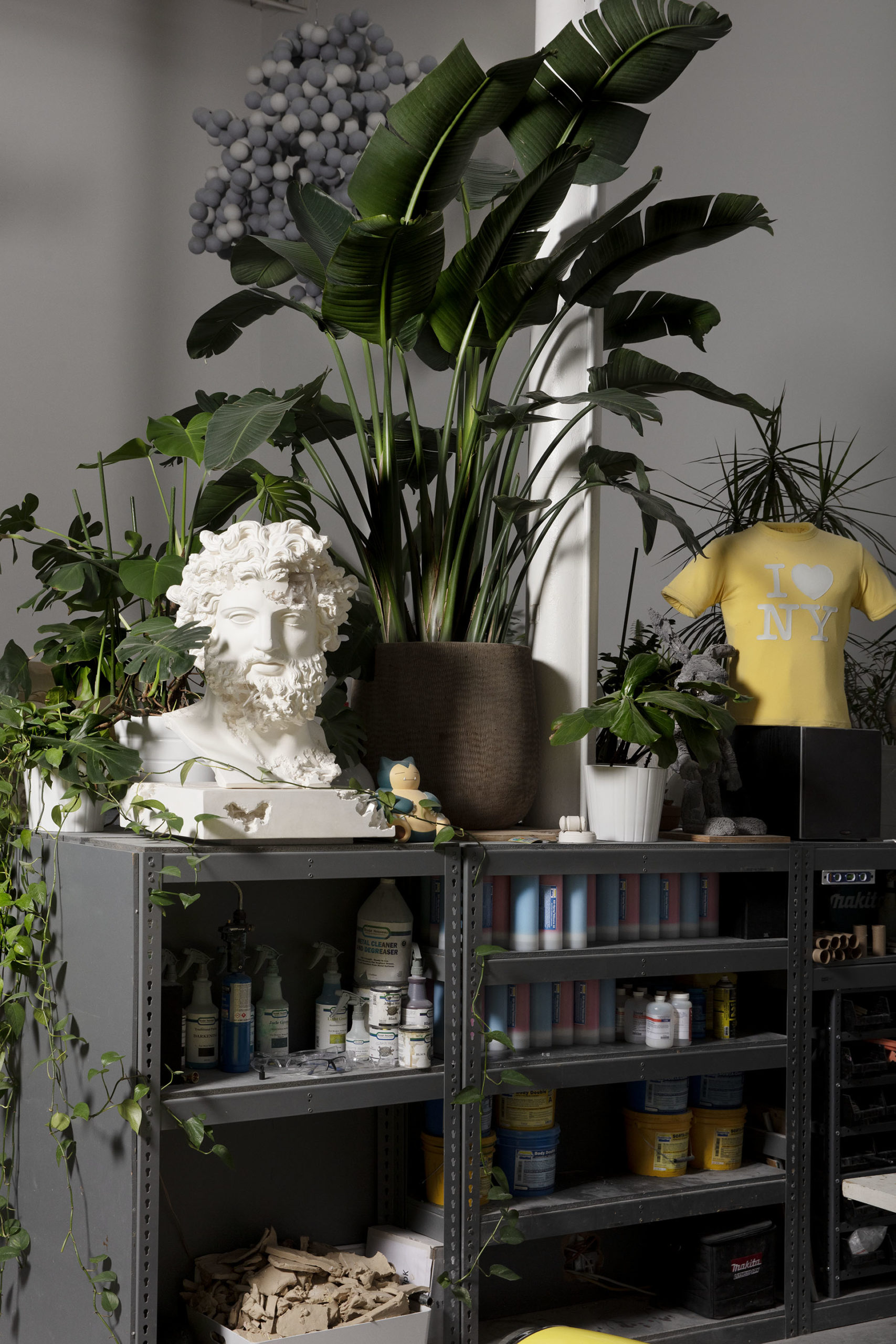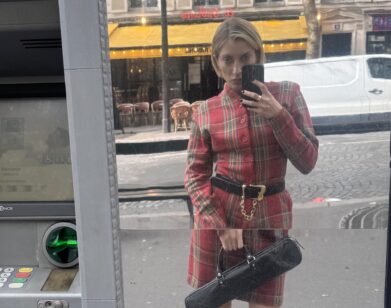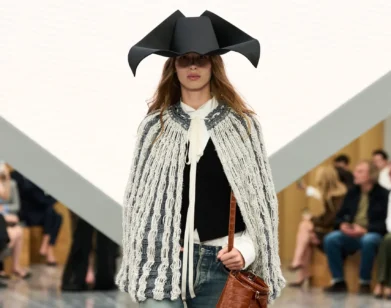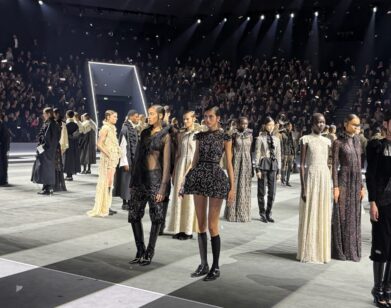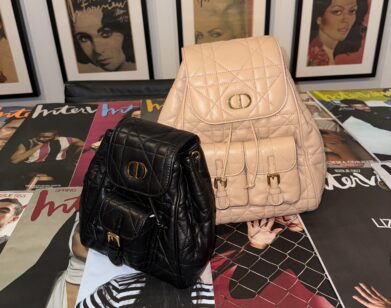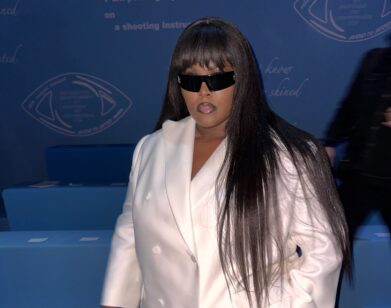STUDIO VISIT
Pokémon, Statues, and Porsches: Daniel Arsham’s Big Boy Playground
Daniel Arsham, the New York-based artist hailing from Cleveland, likes his toys. So much so that his studio in Queens is filled with them. From bumper-to-bumper customized Porsches, life-size Pokémon, Dior everything, and a miniature size version of the Venus Italica. This is the world of Arsham, an amalgam of pop culture, fine art, and toys for big boys. The result is a sort of modern playground filled with anthropologic objects of our time—a Vogue issue, a MetroCard, a GameBoy, and a life-size Pikachu, just to name a few. Here, in Arsham’s space, rules don’t really matter; in fact, the absence of them allows the imagination to run wild and free. It’s what’s allowed the artist to seemingly have done it all, from designing boutiques for Kith and COS to collaborating with Kim Jones for his menswear debut show at Dior, and, most recently, becoming the creative director for the Cleveland Cavaliers—the first NBA team to have one. On the occasion of his latest exhibit at Perrotin, Time Dilation, in which he is unveiling his Pokemon in the U.S., Arsham opened the doors of his studio for Interview to talk about his career, his toys, and to remind us that after all, boys just wanna have fun.
———
ERNESTO MACIAS: How long have you been in the studio?
DANIEL ARSHAM: I’ve been here a little over five years.
MACIAS: When you were designing it or envisioning this space, what was the vibe and where are you going for?
ARSHAM: Honestly, it’s been transformed so many times based on use. There was a period when the design studio Snarkitecture was also here. So there were many more desks as the studio has grown. I’ve been able to keep the cars in here, but honestly, it’s a kind of just giant warehouse-type space that allows us to kind of constantly evolving as needed.
MACIAS: What was your first interaction with art? Back to the very beginning, how did all of this start?
ARSHAM: I liked photography a lot when I was a kid. My grandfather was a kind of amateur photographer—he was one of these guys that always had a camera around his neck. He gave me a camera. I did a lot of photography. I studied art and architecture in high school and ended up coming here to study at Cooper Union in the city and it kind of evolved from there.
MACIAS: Tell me about your desk area over here.
ARSHAM: I started this kind of furniture universe called Objects for Living a couple of years ago. Originally these (his desk and side chair) were made in foam. The chair’s made out of resin, it looks like it’s not going to be comfortable, but when you sit in it’s actually perfect. It was carved in foam, literally with the back of a hammer and a chisel, and then cast in resin. This material is super beautiful to the touch.
MACIAS: The exhibit going on right now at Emmanuel Perrotin is the first time you’re unveiling your Pokémon in the U.S. Tell me about what that is, as someone who grew up with Pokémon. Was it a dream to play with these figures?
ARSHAM: A couple of years ago I made a sculpture around Pikachu and it was exhibited at the Japanese gallery that I worked with. The Pokemon company reached out when they saw that work and asked if I was interested in pursuing something further with them. I had meetings with them in Tokyo, and we started to advise this long-term partnership that not only involves me taking aspects of the Pokémon universe into my work, but also integrating my work back into Pokemon animation. We did a 3D animation where Pikachu is kind of walking through this forest and stumbles upon this sculpture of Pikachu and it’s actually animated. It’s animated in the way that I remember it, which was from the 90s. So it’s all hand-drawn—it has different characteristics from what they’re done now.
MACIAS: How was that for you, as an artist, but also as a fan, I’m assuming you are a fan of Pokémon?
ARSHAM: It’s obviously incredible to be able to engage with that. It’s such an icon in Japan and I mean, globally as well, but it’s definitely up there with some of my top life experiences to be able to go there and see the world from the inside out.
MACIAS: It’s crazy that it’s still so popular. Of all the Pokémons you’ve made, which one’s your favorite?
- Blue Calcite Crystallized Poliwhirl, 2020. ©2021 Pokemon. ©1995 -2021 Nintendo/Creatures Inc./GAME FREAK inc.
- Courtesy of Daniel Arsham and Perrotin.
ARSHAM: I did one of Mew, which was pretty amazing. It’s pretty big.
MACIAS: Because you’re bringing your Pokémon to the U.S. for the first time, what is it that you hope people get out of it?
ARSHAM: That exhibition, the title of the show is Time Dilation. This is a kind of collapse or compression of time. I’m taking works from 2000 years ago from the Roman era and mixing them with Pokemon. In some ways, if you think about it, the distance in creation between those two things is about 2000 years. If we traveled 5,000 years from now, those two things are very close together in time actually. Part of it is about understanding with the perspective of time, the way that we interpret history is very different. These ancient Greek and Roman works were kind of the pop-cultural elements of that era, the same way that Pikachu or Pokémon could be today.
MACIAS: Were you always a big fan of cars?
ARSHAM: Porsche specifically, always loved Porsche since I was a kid, always making drawings. This is a very rare car. This is a 1973 Carrera RS, 2.7. There’s only like a thousand of these made. I mean, this is mint condition.
MACIAS: Have you taken it for a spin?
ARSHAM: I do drive it. This one is amazing. And if you lean into it, you can literally smell the gas. It’s amazing.
MACIAS: I can smell it all the way over here. What is the best memory you’ve had in-car driving?
ARSHAM: These cars are almost like time machines. I have a number of them from different eras. And I almost feel like when you get into this car, it’s almost like you’re getting into like the 1970s with that.
MACIAS: How did your interest in Porsche begin?
ARSHAM: I always loved the shape of these cars. Not only the kind of engineering that goes into the power behind this car but the visual characteristics of it. It looks strong. There’s also a feminine aspect of the design in this car. I’ve always just loved the balance between those two.
MACIAS: What got you interested in working with crystals, to begin with?
ARSHAM: I was making works a little over 10 years ago that were around this idea of fictional archeology, trying to think about taking things from now and pushing them into the future. I wanted to take a camera for instance and make it look like it had been in the ground for 10,000 years. So part of that was the use of crystal in that, gives a sort of truth, quality. It feels real, right? Using this jacket as an example, it’s not like a jacket that’s been painted or distressed to look old. We remade it in the materials that we would associate with the kind of geological transformation. So this is made of volcanic Ash. This is pyrite and there’s selenite crystal.
MACIAS: How did your interest in pop iconography begin? What got you interested in that sort of meshing?
- Courtesy of Daniel Arsham and Perrotin.
- Untitled (detail), 2020.
ARSHAM: If I’m thinking about creating archeology of the present. I need to use things that people have a direct association with. I think there’s something a little bit perverse and transformative when you’re looking at something from your own era, your own life, but you’re looking at it as if it is being seen 10,000 years from now. There’s a time collapse and a time shift that is a bit unsettling. I think that’s useful.
MACIAS: You’ve recently taken this position as creative director of the Cavaliers. Tell me a little bit about that.
ARSHAM: I’ve been a fan of basketball since I was a kid. I was born in Cleveland as well. So the Cavs were my team and the family that owns the team are big art collectors. They commissioned a work of mine for the new arena a couple of years ago. I kept suggesting things to them, and eventually, they were like, “You should just come on board and join the team.” That position didn’t really exist—NBA teams don’t have creative directors. Certainly, it’s a new challenge. It’s something very different. It’s working with a huge team, but I love it because it’s something almost ordinary, so everyday. Everyone loves basketball. Tomorrow we’re actually releasing my jersey from the team, which is the official on-court jersey, but the first jerseys that will be on court that have my design, are out next season.
MACIAS: I know this is a tough question, but I just want to ask it because you have to have a favorite thing. Aside from the cars, what is one thing in this whole studio that you look at every day?
ARSHAM: I mean, this piece right here. This marble work is a work that I bought from auction a couple of years ago. It’s an original 19th-century Antonio Canova, who was one of the most significant Italian sculptors, kind of new classical sculptors. This work has made over 200 years ago, just the delicacy of the fabric. It’s also based on a larger work, which is one of his most famous pieces, which is called the Venus Italica. I like having things like that next to the car and mixing the furniture and the Pokémon universe.
MACIAS: It’s been quite a journey for you. Did you ever imagine any of this for you as an artist?
ARSHAM: There’s very few things that I do today that I could have imagined as a teenager that I would be doing.

